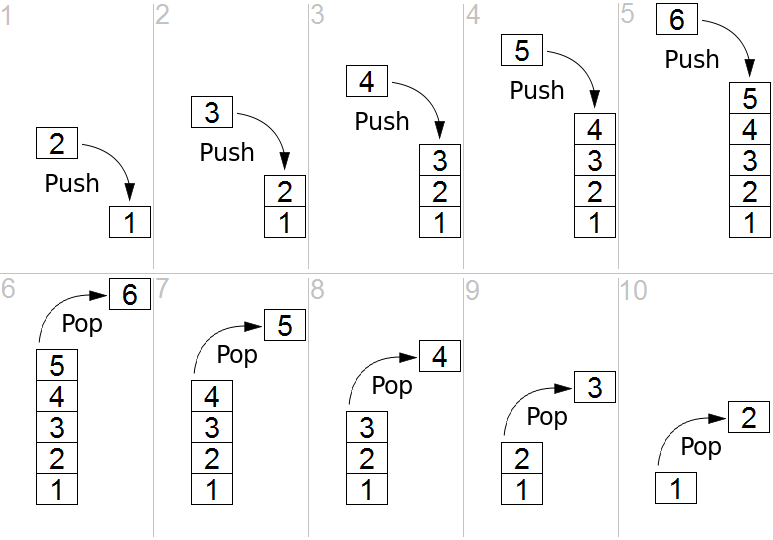Stack

In computer science, a stack is an abstract data type that serves as a collection of elements, with two principal operations: push, which adds an element to the collection, and pop, which removes the most recently added element that was not yet removed. The order in which elements come off a stack gives rise to its alternative name, LIFO (for last in, first out). Additionally, a peek operation may give access to the top without modifying the stack.
The name "stack" for this type of structure comes from the analogy to a set of physical items stacked on top of each other, which makes it easy to take an item off the top of the stack, while getting to an item deeper in the stack may require taking off multiple other items first[2].
Access methods of stack[edit]
- push
- pop
- isEmpty
practical applications of stack[edit]
We can see stack-like behavior with a redo-undo features at many places like editors, photoshop and forward and backward feature in web browsers
A python learning activity[edit]
Using the python list data structure, implement 3 stack functions, push, pop and isEmpty. We assume we know the name of the stack.
myStack = []
def push(element):
# do stuff here
return
def pop():
# do stuff here
return
def isEmpty():
# this function should return as boolean True or False
return
stack[edit]
This video discusses the C programming language, but the content is clear to describe stack.
Standards[edit]
- Describe the characteristics and applications of a stack.
- Construct algorithms using the access methods of a stack.
See Also[edit]
References[edit]
- ↑ http://www.flaticon.com/
- ↑ https://en.wikipedia.org/wiki/Stack_(abstract_data_type)
- ↑ By Maxtremus - Own work, CC0, https://commons.wikimedia.org/w/index.php?curid=44458752
